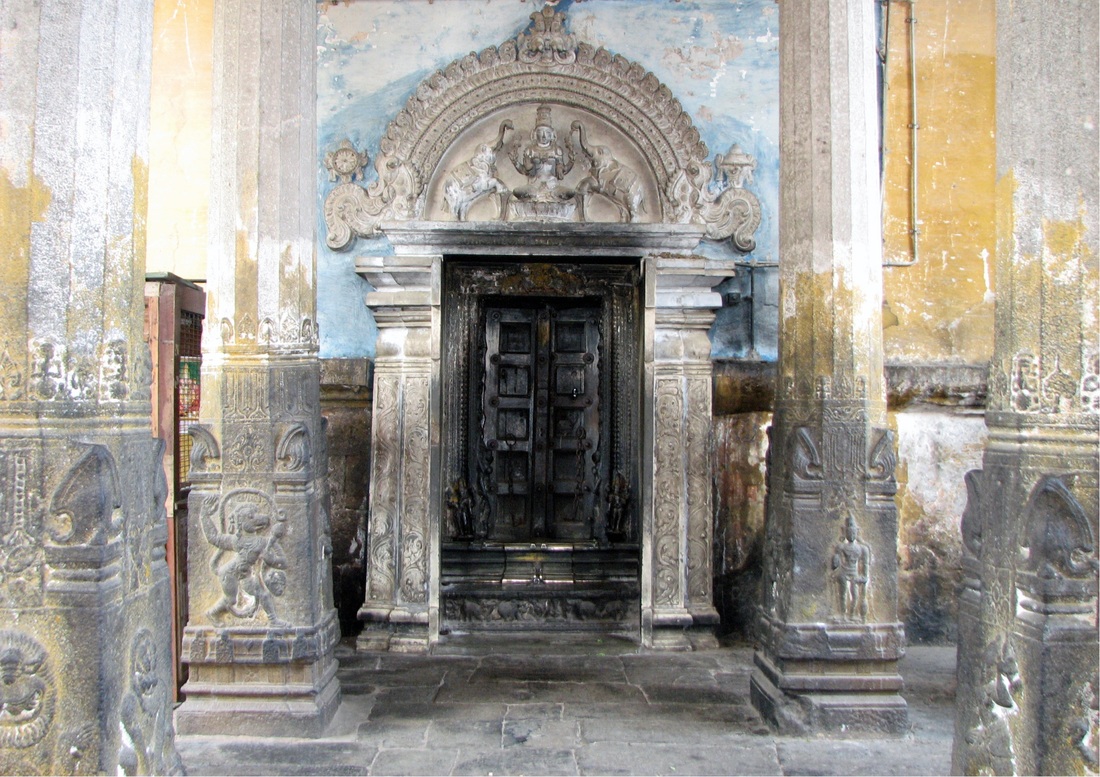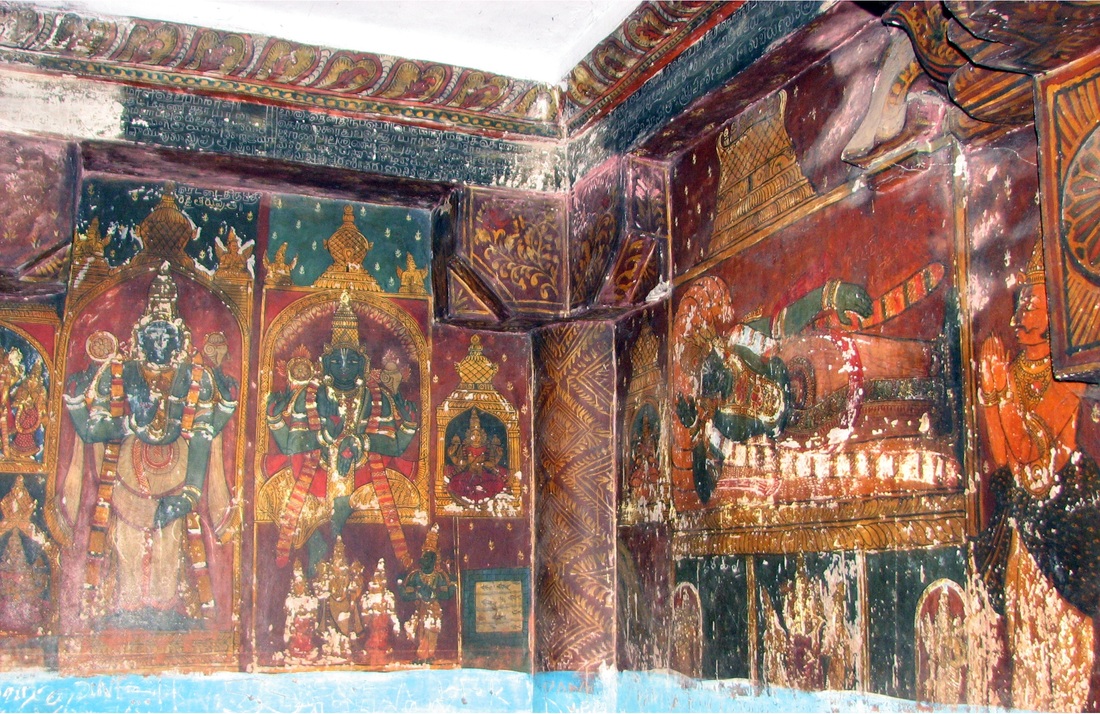Kanchi
|
|
Kanchi Sri Varadaraja Perumal Temple
Dr.T.Sathyamurthy Legend: Indra, the king of celestial deities, after getting released from the curse of Goddess Saraswathi, installed the silver and golden lizards who were the witness of the ordeal. Brahma performed a yagna here, which was washed away by the fast flowing river Vegavathi. The temple deity, Vishnu laid himself flat to stay the flow and the yagna was successfully performed. Vishnu emerged with brilliance of thousand Suns as Devarajaswamy and stayed here for ever. As is the case with the association of South Indian temples with a sacred tree, the name of the temple, Attigiri is derived from Atti tree, considered sacred to Vaishnavas. Varadaraja Perumal temple is recognized as Hastigiri and it was originally known as Attiyuran. Attiyuran is a famous Hindu temple dedicated to Lord Vishnu located in the holy city of Kanchipuram, Tamilnadu, India. It is one of the "Divya Desams" one among the 108 temples of Lord Vishnu believed to have been visited by the 12 Alwars, the poet saints. Brief History of the Temple and the paintings: There is a belief that the temple was first built by the Pallava king Nandivarman II. Varadharaja Perumal Temple was originally built by the Cholas in 1053 and it was expanded during the reigns of the great Chola kings Kulottunga Chola I and Vikrama Chola. In the 14th century another wall and a gopura was built by the later Chola kings. When a Mughul invasion was expected in 1688, the main image of the deity was sent to Udayarpalayam, now part of Tiruchirapalli District. It was brought back with greater difficulty after the involvement of local preceptor who enlisted the services of general Todarmal. Robert Clive, the British general during the colonial period visited the Garuda seva festival and presented a valuable necklace (now termed Clive Maharkandi) which is adorned during the special occasion every year. During the war between mughal king Malikapur and Cheran King 'Ravivarman Kulasekaran', The Chera king won the battle against Kusrukhan who was the captain under Mughal raj in Kancheepuram. Later he celebrated the marriage function of EZHAMATHI (his daughter) with EZHAVAZHUTHI (his captain) in that temple before 18th century. The Temple is a huge one on a 23-acre (93,000 m2) complex which shows the architectural skills of ancient Vishwakarma Sthapathis in temple architecture and is famous for its holiness and ancient history. The temple has 3 outer precincts (prakara) namely Azhwar Prakaram, Madai Palli Prakaram and Thiru Malai Prakaram. There are 32 shrines, 19 Vimanas, 389 pillared halls and sacred tanks, few located outside the complex. The main sanctum faces west and can be entered through a 130 feet tall, 7-tiered Rajagopuram (main gateway tower). The eastern Gopuram is taller than the western Gopuram, which is contrasting to large temples where the Rajagopuram is the tallest one. One of the most famous architectural pieces in the temple is the huge stone chain sculpted in a single stone. The 100 pillared hall which has sculptures depicting Ramayana and Mahabharata stands the masterpiece of Vijayanagara architecture has been renovated by REACH Foundation keeping its architectural and antiquity elements intact, recently. The shrine of Varadarajaswamy is on a small hillock 10m tall and a fleet of 24 steps termed "Hasthagiri" and has murals of the late Vijayanagara empire is found on the ceiling. and around the walls of the Prakara. These paintings mostly depict the stories from the Vishnu Puranam and also depict the 108 divya kshetrams, making the visitor go around the sanctum, giving him the solace and satisfaction of seeing all the Divya Kshetrams in one go! The vimana over the sanctum of Varadaraja Swami is called Punyakoti Vimanam and the one over Perundevi Thayar shrine is called Kalyana Koti Vimanam. Apart from the main stone idol, the temple has the wooden image of Varadarajaswamy preserved within a silver box in water pumped out every 40 years. There is a shrine of Narasimha on the hillock. In the second precinct downstairs contains four shrines, the important one of which is of Malayala Nachiar (Kerala consort), presumably built during the Chera kings in the early 14th century. The third precinct has the shrine of Goddess Perundevi Thayar - it is customary for devotees to visit the shrine first before visiting the Perumal shrine. There are four small pillared halls identical in structure called Tulabharam Mandapas built during the 1532 for a ceremony of Achutaraya of the Vijayanagara Empire. As Lord Vishnu accepted requests of everyone and gave what they wanted, he came to be called ‘Varadar’ or the giver of boons. Om Namo Narayana |



